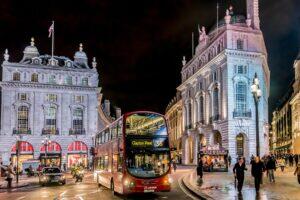Fodor's Expert Review Churchill War Rooms
It was from this small warren of underground rooms—beneath the vast government buildings of the Treasury—that Winston Churchill and his team directed troops in World War II. Designed to be bombproof, the whole complex has been preserved almost exactly as it was when the last light was turned off at the end of the war. Every clock shows almost 5 pm, and the furniture, fittings, and paraphernalia of a busy, round-the-clock war office are still in situ, down to the colored map pins.
During air raids, the leading government ministers met here, and the Cabinet Room is arranged as if a meeting were about to convene. In the Map Room, the Allied campaign is charted on wall-to-wall maps with a rash of pinholes showing the movements of convoys. In the hub of the room, a bank of differently colored phones known as the "Beauty Chorus" linked the War Rooms to control rooms around the nation. Spot the desk from which the PM made his morale-boosting broadcasts; the Transatlantic Telephone... READ MORE
It was from this small warren of underground rooms—beneath the vast government buildings of the Treasury—that Winston Churchill and his team directed troops in World War II. Designed to be bombproof, the whole complex has been preserved almost exactly as it was when the last light was turned off at the end of the war. Every clock shows almost 5 pm, and the furniture, fittings, and paraphernalia of a busy, round-the-clock war office are still in situ, down to the colored map pins.
During air raids, the leading government ministers met here, and the Cabinet Room is arranged as if a meeting were about to convene. In the Map Room, the Allied campaign is charted on wall-to-wall maps with a rash of pinholes showing the movements of convoys. In the hub of the room, a bank of differently colored phones known as the "Beauty Chorus" linked the War Rooms to control rooms around the nation. Spot the desk from which the PM made his morale-boosting broadcasts; the Transatlantic Telephone Room (a converted broom cupboard) has his hotline to FDR. You can also see the restored rooms that the PM used for dining and sleeping. Telephonists (switchboard operators) and clerks who worked 16-hour shifts slept in lesser quarters in unenviable conditions.
An excellent addition to the War Rooms is the Churchill Museum, a tribute to the great wartime leader himself.
READ LESS








